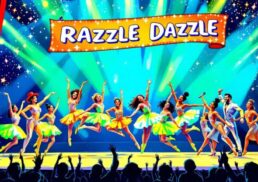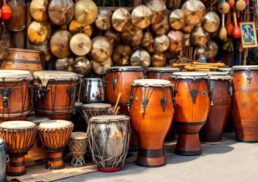Education learning toys are key to your child’s growth. In this article, you’ll find the best toys by age group and learn how they boost motor skills, language, math, and creativity.
Table of Contents
Key Takeaways
Choose age-appropriate educational toys that match your child’s developmental stage to boost their motor skills, social interaction, and creativity.
Educational games and toys can enhance essential skills like language, math, creativity, and problem-solving in a fun and engaging way.
Opt for safe and interactive toys that promote curiosity and provide long-term cognitive, social, and emotional benefits, aiding in overall development.
Discover the Best Learning Toys by Age
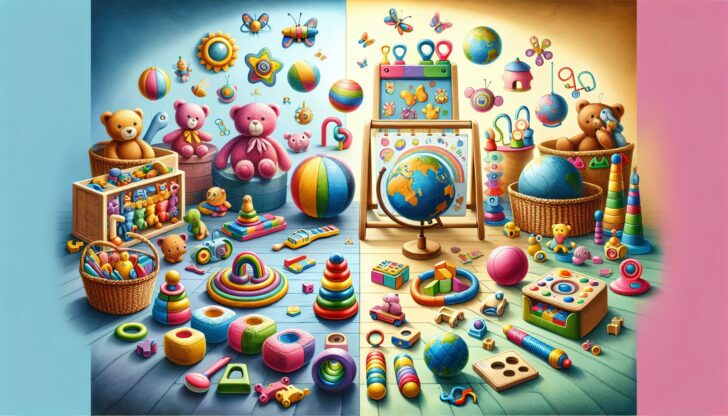
Searching for the perfect toy may seem daunting, yet there’s no need to worry. Choose toys that provide both entertainment and enrichment, promoting your child’s developmental stage and emerging abilities. From infancy to preschool, the right educational toys can foster motor skills, spark social interaction, and ignite creative thinking.
Infants (0-12 months)
In the first year of life, babies are sensory explorers, learning about the world through touch, sound, and sight. Toys that rattle, jingle, and are textured for little hands offer delightful ways to discover and grow. Think of the Yeeeasy Tummy Time Water Mat, which brings sensory development to the forefront for infants from 3 to 12 months, or the Melissa & Doug’s Flip Fish Soft Baby Toy, designed to captivate during tummy time with sensory tags that encourage fine motor development.
The ROHSCE Sensory Balls set and Skip Hop’s Bandana Buddies offer a feast of textures and sounds to help infants develop their tactile senses and motor skills. And let’s not forget the power of high-contrast images in soft books, which can stimulate an infant’s vision and cognitive development.
Toddlers (1-3 years)
As toddlers begin to toddle, their play shifts towards vocabulary building, problem-solving, and mastering hand-eye coordination. Board books and toy phones invite pretend play and language development. Two-year-olds can graduate to wood puzzles, blocks that snap together, and sorting toys that challenge their burgeoning problem-solving skills and fine motor development. The Itzy Ritzy Bitzy Crinkle Sensory Toy Bunny adds a delightful mix of crinkle sounds and soft textures that are just right for tiny hands to explore. These toys lay the groundwork for a lifetime of learning, making each play session an opportunity for growth.
Preschoolers (3-5 years)
Preschoolers are little inventors and storytellers, their imaginations ready to be fueled by the right toys. Construction sets, transportation toys, and child-sized furniture empower them to create worlds of their own, advancing imaginative play and fine motor skills. Tea sets and toy tools are not just fun; they’re a playground for creativity and fine motor skill enhancement.
Puzzles with more pieces and building sets challenge preschoolers to think critically and solve problems, nurturing both cognitive skills and an understanding of spatial relationships. These toys don’t just entertain; they build the foundation for advanced learning and creativity.
Enhance Skills with Educational Games
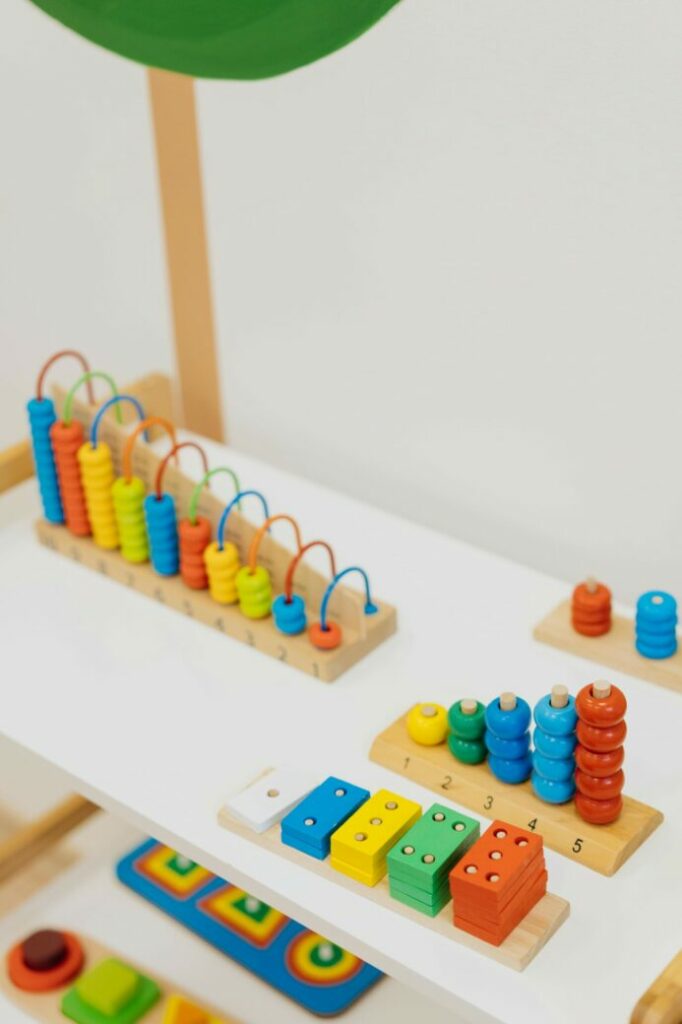
Educational games serve as a hidden key, transforming learning into an exciting journey. Designed with fun at their core, these games target essential skills like:
language
math
creativity
problem-solving
Transforming them into engaging activities that kids can’t get enough of is a positive change.
Language and Reading Games
Imagine a dance party where every move is a step towards better language skills—that’s ‘Letter Dance Party’, making letter recognition a groove-worthy activity. The Topic Game turns vocabulary building into a focused challenge, encouraging kids to stick to a subject and follow directions.
For a dash of drama, there’s ‘Princess Presto’s Spectacular Spelling Play’, where spelling becomes the star of the show. And who said rhyming can’t be thrilling? ‘Wonder Red’s Rhyme Racer’ brings phonological awareness to the fast lane with a roller skating twist.
As for budding authors, the ‘Storybook Creator’ with Super Why! lets them weave their own tales, enhancing literacy and creativity in one fell swoop.
Math and Shapes Games
Numbers and shapes can be as captivating as a game of hide and seek when Curious George is involved, teaching number recognition in the most playful way. Free shapes games take the mystery out of 2D and 3D shapes, symmetry, and coordinates, turning abstract concepts into concrete fun. With games like Shape Monsters and Geoboard, children can feed friendly creatures the right shapes or stretch bands to create their own geometric designs, fostering a hands-on understanding of spatial relationships.
And let’s not forget Pattern Shapes and Shape Patterns, where making tessellations and completing sequences become a colorful game of logic and creativity for young minds.
Creativity and Problem-Solving Games
What do you get when you mix a deck of cards with a dash of imagination? Improvisational Stories, a game where kids collaborate to narrate a tale, nurturing their creativity and problem-solving skills.
Puzzles are timeless tools for spatial awareness, and magnetic construction kits turn problem-solving into an exciting challenge for toddlers. Dolls, action figures, and dress-up kits aren’t just toys; they’re catalysts for imagination, creativity, and social skills. By inviting children to think outside the box, these games lay the groundwork for critical thinking and innovative problem-solving that will serve them well into the future.
Shop for Toys that Spark Curiosity
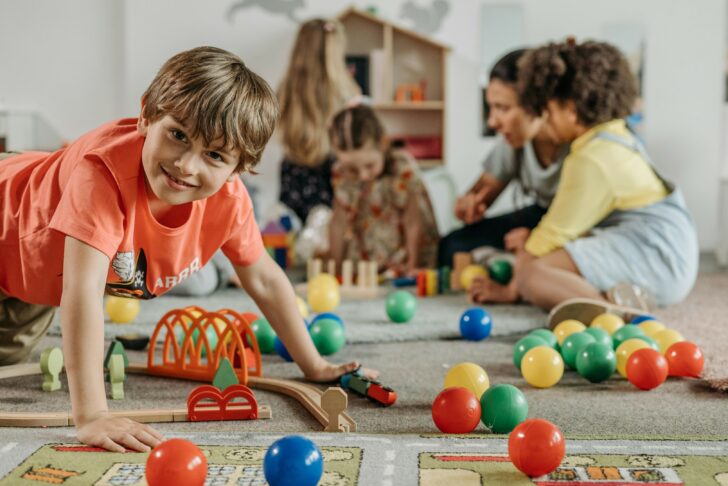
When you navigate through toy aisles or scroll online, search for toys that offer more than amusement. Look for ones that ignite curiosity, provoke questions, and stimulate exploration. It’s all about finding those gems that will ignite a love for learning in your child.
Interactive Toys
Interactive toys are like personal playgrounds that respond to a child’s touch, turning playtime into an engaging and dynamic experience. With toys that light up, make sounds, and move, kids are drawn into a world of learning that feels like magic. Talking microscopes and interactive cooking sets are more than just fun; they’re a gateway to learning kitchen skills and discovering the microscopic world.
These toys are not just about showing kids how things work; they’re about adding an extra layer of excitement to the learning process.
STEM Toys
In a world that’s ever-changing, STEM toys are the stepping stones to understanding the basics of science, technology, engineering, and math. Magnetic tiles and building blocks are not just about putting pieces together; they’re an introduction to engineering concepts and problem-solving.
For infants, the Sassy Stacks of Circles Stacking Ring is a colorful way to learn about size and sequence, while robotic kits offer older kids a hands-on experience with coding and technology. These toys are great because they spark a love for subjects that shape the future, all while having a ton of fun.
Art and Craft Toys
Art and craft toys are the tools that allow children’s creativity to run wild, with a variety of mediums like crayons, paints, and clay to choose from. From pencils and glues to kitchen art activities, these toys enhance fine motor skills, imagination, and creativity. ‘Alpha Pig’s Paint By Letter’ artfully combines literacy with art, while craft kits provide guided projects for creative expression.
Stickers and coloring books might seem simple, but they’re effective gateways to artistic freedom, providing a canvas for imagination. Remember to always check that art materials are non-toxic for safe creative play.
Fun Ideas for Learning Through Play
Learning through play is more than a theoretical idea; it’s a dynamic methodology that infuses education with vitality. With the right toys and a dash of creativity, playtime can become a rich soil where the seeds of knowledge grow and flourish.
DIY Learning Activities
Away from screens and gadgets, DIY learning activities are a treasure trove of creativity and exploration. Homemade playdough, imaginative structures from empty boxes, and shaving cream art are simple yet profoundly educational. These activities not only spark joy but also help children understand the world around them through tactile and sensory experiences, nurturing their natural curiosity.
Outdoor Educational Play
Outdoor play is where physical activity and learning collide, creating a playground for both body and mind. Some examples of outdoor activities that promote physical activity and learning include:
Bikes and scooters, which promote gross motor skills
Scavenger hunts, which can introduce concepts like observation and problem-solving
Kite flying, which can introduce concepts like aerodynamics and weather in a tangible way
These activities provide a fun and engaging way for children to learn and develop important skills.
The great outdoors is a classroom without walls, where children can learn through movement, exploration, and play, fostering a comprehensive development that’s as natural as the breeze.
Group Play and Social Skills
When children come together for play, they’re not just sharing toys; they’re sharing experiences and building social skills. Here are some examples of games and activities that can help children develop these skills:
Board games designed for preschoolers can teach turn-taking and cooperation.
The Roll the Ball game introduces toddlers to the basics of taking turns and counting.
Team-building activities and role-playing games teach empathy, communication, and collaboration.
These activities lay a strong foundation for interpersonal skills that will last a lifetime.
These group play experiences are pivotal in shaping confident, socially adept individuals.
The Importance of Choosing the Right Toy
Selecting the appropriate toy extends beyond personal tastes; it’s a crucial decision influencing your child’s cognitive, social, and emotional development, remarkably augmenting the learning results.
Safety Considerations
Safety should always be the top priority when selecting a toy. Non-negotiable factors to consider include:
Non-toxic materials
Compliance with safety standards
Absence of choking hazards
Labels indicating toys are flame resistant
Washable toys
Secure battery cases
These factors will help keep your little ones safe from potential risks.
Keep in mind, safeguarding the safety of educational toys offers more than mere protection; it provides you with tranquility and a secure space for your child’s learning and growth at the age shop.
Developmental Milestones
Every child’s development is a unique journey, and age-appropriate learning toys are the companions that can make this journey fruitful. Toys like shape sorters, puzzles, and threading beads are instrumental in nurturing fine motor skills and hand-eye coordination, helping children reach those all-important developmental milestones.
Long-Term Benefits
The toys children engage with today can mold their future. Educational toys are associated with improved academic performance and can foster enduring passion for learning. These toys surpass short-term enjoyment, providing lasting benefits that impact diverse areas of a child’s development and prospective achievements.
Summary
As we wrap up our exploration of educational learning toys, it’s clear that the right toy can be a powerful catalyst for growth, discovery, and joy. By choosing toys that are safe, appropriate, and designed to develop essential skills, we can provide our children with the tools they need to build a bright and curious future. Let’s ensure that playtime is always an opportunity for learning, creativity, and fun.
Frequently Asked Questions
What are the best types of toys for infants to promote sensory development?
The best types of toys for infants to promote sensory development are rattles, textured balls, and soft books, as they provide sensory experiences and encourage motor skill development. Try introducing these to your little one for a fun learning experience!
How can educational games improve my child’s learning experience?
Educational games can improve your child’s learning experience by making learning enjoyable and incorporating fun elements into skill development, such as language, math, creativity, and problem-solving. This can help them engage more with the material and retain information better.
Are STEM toys beneficial for toddlers, and if so, how?
STEM toys are beneficial for toddlers because they introduce basic science, technology, engineering, and math concepts in a fun way, encouraging curiosity and problem-solving skills. This can help with their development.
What safety considerations should I keep in mind when choosing toys for my child?
When choosing toys for your child, make sure they are made of non-toxic materials, free from choking hazards, compliant with safety standards, and labeled as flame resistant or retardant.
Can the right toy really have long-term benefits for my child?
Yes, educational toys can have long-term benefits for your child by improving academic performance and fostering a love of learning. So, it’s worth investing in them.

